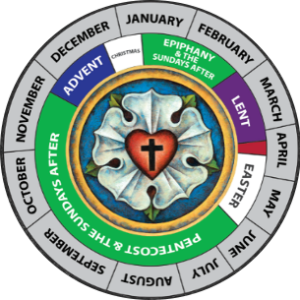THE TIME OF CHRISTMAS:
EPIPHANY AND ITS SEASON
 Epiphany begins with evening prayer on January 5 and ends the Tuesday before Ash Wednesday.
Epiphany begins with evening prayer on January 5 and ends the Tuesday before Ash Wednesday.
Epiphany is one of the oldest seasons in the Christian Church Year, second only to the Easter season.
This season of lights emphasizes Jesus manifestation (or epiphany, from the Greek epiphaneia) as God and man. The earliest Christians called the Feast of the Epiphany the Theophany (“revelation of God”). When the Gentile Magi come to worship Jesus, they show that everyone now has access to God. Now all people, Jew and Gentile, can come to God’s temple to worship, because Jesus is the new temple: God in the flesh. The Epiphany of Our Lord (January 6) marks the celebration of the visit of the Magi.
Epiphany may include as many as nine Sundays, depending on the date of Easter. The season is marked at its beginning and at its end by two important feasts of Christ.
During Epiphany, we worship Jesus, who has given all mankind access to God through Himself.
Matthew 2:1-12
Matthew 3:13-17
John 2:1-11
EPIPHANY PRACTICES AND TRADITIONS
Like Christmas, the Epiphany of Our Lord, the Baptism of Our Lord, and the Transfiguration of Our Lord are feast days of Jesus. The color for feast days is white, the color of divinity, purity, and joy. The Sundays after the Epiphany focus on the growth of Jesus’ ministry, and the color green is used to symbolize that growth.
On the First Sunday after the Epiphany, the Church celebrates the Baptism of Our Lord. The Father sent Jesus to bear the sins of the world. So Jesus steps down into baptismal waters so that He can soak up the sins of the world: He is baptized into our sins so that our Baptism might be into His death and resurrection for the forgiveness of sins.